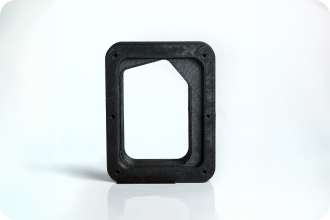Sustainability

Additive manufacturing (AM) stands at the forefront of sustainable industrial innovation which is a key factor in our decision to establish the South Texas Center of Excellence for Advanced Thermoplastics Additive Manufacturing and Materials Research.
By significantly reducing material waste through precise material deposition, AM aligns with national goals of minimizing resource consumption. The South Texas CoE leverages AM's capability for on-demand, localized production, which not only decreases transportation emissions but also shortens supply chains, enhancing overall efficiency. The CoE will serve as a hub for spreading this sustainable technology throughout South Texas and beyond.


Furthermore, the design freedoms offered by AM enable the creation of lightweight structures, crucial for reducing fuel consumption in sectors like aerospace and automotive.
By supporting the CoE, the government and other sponsors will be endorsing a technology that not only meets but exceeds current sustainability standards, fostering an economy that is both technologically advanced and environmentally responsible.
The many sustainable advantages of additive manufacturing
-
Material Usage:
Additive manufacturing typically uses only the material needed to create the printed part, leading to significantly less waste compared to traditional subtractive manufacturing methods.
-
Recyclability:
Many AM processes use materials that can be recycled and reused, further reducing waste. This is particularly true of thermoplastics-based materials.
-
New materials:
In the materials research we carry out in collaboration with research institutes and manufacturers, we will stress the need for creating new materials that lend themselves to energy efficient production and recycling.
-
Manufacturing Process:
AM often requires less energy than conventional manufacturing methods because it builds objects layer by layer, avoiding the energy-intensive steps of cutting and machining.
-
On-Demand Production:
Many AM processes use materials that can be recycled and reused, further reducing waste. This is particularly true of thermoplastics-based materials.
-
These are factors that we will be researching and teaching at the CoE.
-
Localized Production:
AM enables localized production, which can reduce transportation emissions and logistics-related energy consumption. This is precisely one of the reasons that the technology we are using, AnyForm 3Dware, was developed in the first place.
-
Reduced Lead Times:
The ability to produce parts quickly and locally can shorten supply chains, leading to fewer emissions from expedited shipping methods.
-
Lightweight Structures:
AM allows for the creation of lightweight structures without compromising strength, which is particularly beneficial in industries such as aerospace and automotive, leading to reduced fuel consumption and emissions.
-
Complex Geometries:
The technology is unique in its ability to create complex geometries that can improve the efficiency and performance of products, such as improved aerodynamics or better thermal management.
-
Cost Savings:
Reduced material waste and energy consumption as well as costs of transportation of parts and materials translate into cost savings, making sustainable practices economically viable.
-
Job Creation:
AM can create high-skilled jobs in tech, engineering, and design, contributing to a sustainable economy.
-
A railway that had remote maintenance and repair shops and had to transport spare parts across huge distances, installed an AM system for manufacturing non-critical parts on site and saved enormously in terms of costs and energy required to move those parts across these huge distances.
-
There are innumerable ways in which AM can save costs and reduce energy consumption.
-
Policy Alignment:
By Reducing carbon emissions, promoting recycling and waste reduction, amd fostering innovation in green technologies, AM represents a major sustainability gain for South Texas.